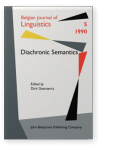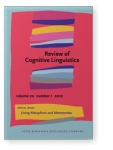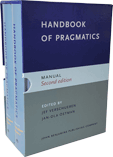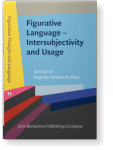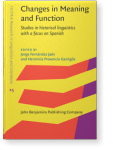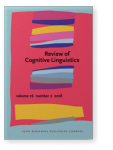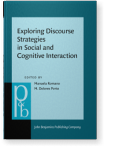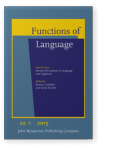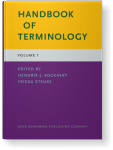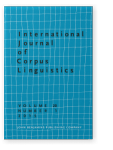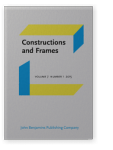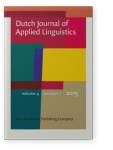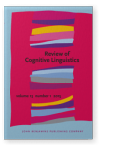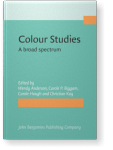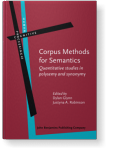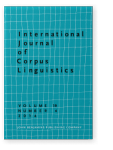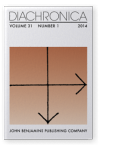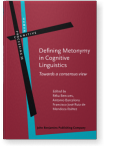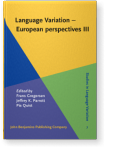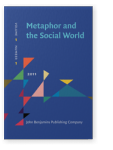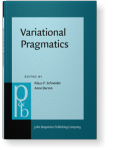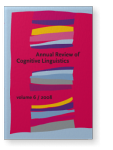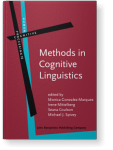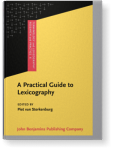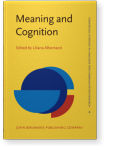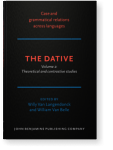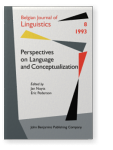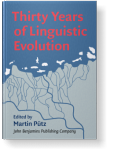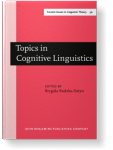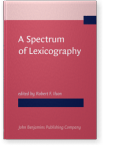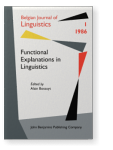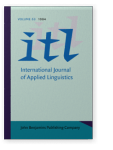Dirk Geeraerts
List of John Benjamins publications for which Dirk Geeraerts plays a role.
Journals
ISSN 1876-1933 | E-ISSN 1876-1941
ISSN 1877-9751 | E-ISSN 1877-976X
Book series
Yearbook
ISSN 1572-0268 | E-ISSN 1572-0276
Online Resource
Titles
Cognitive Exploration of Language and Linguistics: Second revised edition
Edited by René Dirven † and Marjolijn H. Verspoor
[Cognitive Linguistics in Practice, 1] 2004. xii, 277 pp.
Subjects Cognition and language
Cognitive Exploration of Language and Linguistics
René Dirven † and Marjolijn H. Verspoor
[Cognitive Linguistics in Practice, 1 (1999)] 1999. xiv, 300 pp.
Subjects Cognition and language
Subjects Historical linguistics | Semantics
2022 What does it mean to wear a mask? Living Metaphors and Metonymies, Brdar, Mario and Rita Brdar-Szabó (eds.), pp. 70–90 | Article
If first-order empathy is the ability of Self to take into account Other’s point of view, then second-order empathy may be identified as the ability of Self to take into account Other’s point of view as including a view of Self. Considering that a hearer may choose between a first-order empathic… read more
2022 Lexical field analysis Handbook of Pragmatics: Manual, Verschueren, Jef and Jan-Ola Östman (eds.), pp. 844–848 | Chapter
2022 Cognitive linguistics Handbook of Pragmatics: Manual, Verschueren, Jef and Jan-Ola Östman (eds.), pp. 178–184 | Chapter
2021 Second-order empathy, pragmatic ambiguity, and irony Figurative Language – Intersubjectivity and Usage, Soares da Silva, Augusto (ed.), pp. 19–40 | Chapter
If first-order empathy is the ability of Self to take into account Other’s point of view, second-order empathy may be defined as the ability of Self to take into account Other’s point of view as including a view of Self. The paper argues that the possibility for the hearer to choose between a… read more
2020 A note on the relative diachronic productivity of metaphor and metonymy Changes in Meaning and Function: Studies in historical linguistics with a focus on Spanish, Fernández Jaén, Jorge and Herminia Provencio Garrigós (eds.), pp. 109–116 | Chapter
The assumption that the progress of culture is characterized by an increase in abstract thinking (in terms of the Vygotskyan model of cognitive development) suggests that the proportion of productive metaphor compared to metonymy increases over time. However, a large-scale investigation of… read more
2018 English as a lingua franca in Europe: The identification of L1 and L2 accents: A multifactorial analysis of pan-European experimental data Review of Cognitive Linguistics 16:2, pp. 494–518 | Article
While empirical research on attitudes towards languages and linguistic varieties has become increasingly popular from the 1960s onwards (e.g. Lambert, Hodgson, Gardner, & Fillenbaum, 1960), experimental investigations into the ability to correctly identify the origin of speakers are in… read more
2016 Individual differences and in situ identity marking: Colloquial Belgian Dutch in the reality TV show "Expeditie Robinson” Exploring Discourse Strategies in Social and Cognitive Interaction: Multimodal and cross-linguistic perspectives, Romano, Manuela and M. Dolores Porto (eds.), pp. 39–77 | Article
Over the past decades, sociolinguists and Cognitive Linguists have shifted their attention to individual differences and intra-speaker variation (Hernández-Campoy & Cutillas-Espinosa 2013; Barlow 2013). This chapter aims to add to this trend by conducting a bottom-up analysis of the speech of… read more
2015 Usage-related variation in the referential range of blue in marketing context Sensory Perceptions in Language and Cognition, Caballero, Rosario and Carita Paradis (eds.), pp. 20–43 | Article
The paper explores language-internal variation in the referential meaning of the lexical form blue. Taking a usage-based cognitive approach, we analyze the referential range of blue in several marketing contexts from a semasiological and an onomasiological perspective. The study develops an… read more
2015 Foreword Handbook of Terminology: Volume 1, Kockaert, Hendrik J. and Frieda Steurs (eds.), pp. xvii–xix | Miscellaneous
2015 The corpus-based identification of cross-lectal synonyms in pluricentric languages International Journal of Corpus Linguistics 20:1, pp. 54–80 | Article
This article discusses a corpus-based method for the automatic identification of synonyms across different varieties of the same language. This method, based on the paradigm of distributional semantics, quantifies semantic similarity on the basis of contextual similarity in two comparable corpora.… read more
2015 Lectal constraining of lexical collocations: How a word’s company is influenced by the usage settings Constructions and Frames 7:1, pp. 1–46 | Article
Adopting a corpus-based approach, lexical collocations are reconsidered from a lectal perspective. Analyzing adjective-noun collocations, it will be shown that lexical collocations are conditioned by the language settings in which they are used. These lectal constraints do not only apply to lexical… read more
2015 English-only job advertising in the Low Countries: The impact of job-related and company-related predictors Dutch Journal of Applied Linguistics 4:1, pp. 6–20 | Article
This paper presents a multifactorial quantitative corpus-based analysis of the distribution of English-only ads in the Low Countries. The dataset consists of approximately one thousand job ads, published in Vacature (a Belgian Dutch job ad magazine) and Intermediair (a Netherlandic Dutch job ad… read more
2015 Cross-linguistic variation in metonymies for PERSON: A Chinese-English contrastive study Review of Cognitive Linguistics 13:1, pp. 220–256 | Article
This paper investigates metonymies for person in Chinese and English in the framework of Cognitive Linguistics with an emphasis on cross-linguistic variation. Our central goal is to highlight the important role of cultural elements on the use of metonymy. Three main types of cross-linguistic… read more
2014 Referential meaning in basic and non-basic color terms Colour Studies: A broad spectrum, Anderson, Wendy, Carole P. Biggam, Carole Hough and Christian Kay (eds.), pp. 323–338 | Article
The chapter presents a linguistic analysis of the referential meanings in the semasiological structure of basic and non-basic color terms in a specific usage situation such as marketing. Although most linguistic studies share the assumption about the central role of the reference-related aspects in… read more
2014 Dutch causative constructions: Quantification of meaning and meaning of quantification Corpus Methods for Semantics: Quantitative studies in polysemy and synonymy, Glynn, Dylan and Justyna A. Robinson (eds.), pp. 205–221 | Article
This chapter is a multivariate corpus-based study of two near-synonymous periphrastic causatives with doen and laten in Dutch. Using multiple logistic regression and classification trees, the study explores the conceptual differences between the constructions. The results support the existing… read more
2014 Spurious effects in variational corpus linguistics: Identification and implications of confounding International Journal of Corpus Linguistics 19:4, pp. 478–504 | Article
As repositories of spontaneously realized language, corpora generally have an uncontrolled and unbalanced structure where all variables operate simultaneously. Consequently, a variable’s real effect can be concealed when studied in isolation because of the exclusion of the impact of other… read more
2014 Core vocabulary, borrowability and entrenchment: A usage-based onomasiological approach Diachronica 31:1, pp. 74–105 | Article
It is often claimed in contact linguistics that core vocabulary is highly resistant to borrowing. If we want to test that claim in a quantitative way, we need both a quantitative measure of coreness and a method for quantifying borrowability. We suggest here a usage-based operationalization of… read more
2011 Zones, facets, and prototype-based metonymy Defining Metonymy in Cognitive Linguistics: Towards a consensus view, Benczes, Réka, Antonio Barcelona and Francisco José Ruiz de Mendoza Ibáñez (eds.), pp. 89–102 | Article
This chapter investigates the relationship between metonymy and two related semantic phenomena: profile/zone discrepancy and facetization. Both of these phenomena aim to explain linguistic examples that activate only a specific zone or facet of the entity referred to. However, their precise… read more
2011 Changing the world vs. changing the mind: Distinctive collexeme analysis of the causative construction with doen in Belgian and Netherlandic Dutch Language Variation - European Perspectives III: Selected papers from the 5th International Conference on Language Variation in Europe (ICLaVE 5), Copenhagen, June 2009, Gregersen, Frans, Jeffrey K. Parrott and Pia Quist (eds.), pp. 111–122 | Article
2011 Variation in the (non)metonymic capital names in Mainland Chinese and Taiwan Chinese Metaphor and the Social World 1:1, pp. 90–112 | Article
This paper examines the (non)metonymic usage of capital names in news articles from Mainland Chinese and Taiwan Chinese and shows that this phenomenon is actually more complex than might have been expected. We annotated capital names extracted from a self-built news corpus with insights from… read more
2009 Lexical patterning in a construction grammar: The effect of lexical co-occurrence patterns on the inflectional variation in Dutch attributive adjectives Constructions and Frames 1:1, pp. 87–118 | Article
This paper compares two measures that quantify lexical preference patterns in the area of Construction Grammar, namely, collostructions and (construction-internal) collocations (as conceived by Stefan Th. Gries and Anatol Stefanowitsch). Starting from a case study, inflectional variation in Dutch… read more
2008 The distribution of T/V pronouns in Netherlandic and Belgian Dutch Variational Pragmatics: A focus on regional varieties in pluricentric languages, Schneider, Klaus P. and Anne Barron (eds.), pp. 181–209 | Article
2008 Usage-based dialectology: Emotion concepts in the Southern Csango dialect Annual Review of Cognitive Linguistics: Volume 6, Ruiz de Mendoza Ibáñez, Francisco José (ed.), pp. 23–49 | Article
Applying concepts of Cognitive Linguistics to dialectological data of a traditional kind, the present paper addresses the question whether differences of culture and conceptualization could be detected language-internally, not just across languages. At the same time, it shows that the traditional… read more
2008 Prosodic and syntactic-pragmatic mechanisms of grammatical variation: The impact of a postverbal constituent on the word order in Dutch clause final verb clusters International Journal of Corpus Linguistics 13:2, pp. 194–224 | Article
This paper reports on a quantitative corpus-based study of the impact of a postverbal constituent (PVC) on the choice of word order in Dutch written clause final verb clusters consisting of a participle and an auxiliary verb. The study verifies the results of previous research by analyzing the… read more
2007 A case for a cognitive corpus linguistics Methods in Cognitive Linguistics, Gonzalez-Marquez, Monica, Irene Mittelberg, Seana Coulson and Michael J. Spivey (eds.), pp. 149–169 | Article
2003 2.2 Meaning and definition A Practical Guide to Lexicography, Sterkenburg, Piet van (ed.), pp. 83–93 | Chapter
2000 Salience phenomena in the lexicon: A typology Meaning and Cognition: A multidisciplinary approach, Albertazzi, Liliana (ed.), pp. 79–101 | Chapter
As essentially an analysis of the various types of salience, this essay develops an original notion of structure as constituted by the interplay between the semantic and the pragmatic perspectives. The distinction drawn by the author between semasiology and onomasiology clarifies the difference… read more
1999 Purism and Fashion: French Influence on Belgian and Netherlandic Dutch Variation in (Sub)standard language, Belemans, Rob and Reinhild Vandekerckhove (eds.), pp. 53–67 | Article
1998 The semantic structure of the indirect object in Dutch The Dative: Volume 2: Theoretical and contrastive studies, Van Langendonck, Willy and William Van Belle (eds.), pp. 185–210 | Article
1995 Lexical field analysis Handbook of Pragmatics: Manual, Verschueren, Jef, Jan-Ola Östman and Jan Blommaert † (eds.), pp. 343–346 | Article
1995 Cognitive linguistics Handbook of Pragmatics: Manual, Verschueren, Jef, Jan-Ola Östman and Jan Blommaert † (eds.), pp. 111–116 | Article
1993 Generalised Onomasiological Salience Perspectives on Language and Conceptualization, Nuyts, Jan and Eric Pederson (eds.), pp. 43–56 | Article
1992 The return of hermeneutics to lexical semantics Thirty Years of Linguistic Evolution: Studies in honour of René Dirven on the occasion of his 60th birthday, Pütz, Martin (ed.), pp. 257–284 | Article
1990 Homonymy, Iconicity, and Prototypicality Diachronic Semantics, Geeraerts, Dirk (ed.), pp. 49–74 | Article
1990 Introduction Diachronic Semantics, Geeraerts, Dirk (ed.), pp. 7–8 | Miscellaneous
1988 Cognitive grammar and the history of lexical semantics Topics in Cognitive Linguistics, Rudzka-Ostyn, Brygida (ed.), pp. 647–678 | Article
1988 Where does prototypicality come from? Topics in Cognitive Linguistics, Rudzka-Ostyn, Brygida (ed.), pp. 207–230 | Article
1987 Types of Semantic Information in Dictionaries A Spectrum of Lexicography, Ilson, Robert F. (ed.), p. | Article
1986 Functional Explanations in Diachronic Semantics Functional Explanations in Linguistics, Bossuyt, Alain (ed.), pp. 67–93 | Article
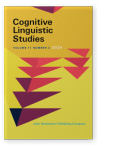
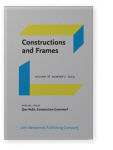
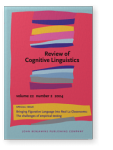
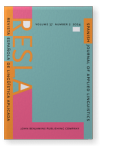
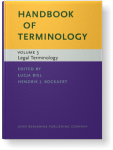
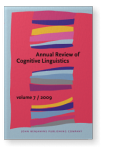
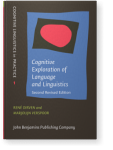
.hb.png)
